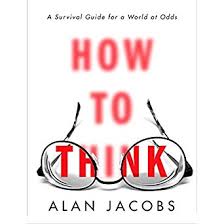Window on the World - A Review
Finding helpful resources for discipling children can be a challenge. It is difficult to find resources that are reasonably up to date, engaging, and avoid theologically tendentious assertions.
In particular, teaching children about other cultures and the pressing need for a broader vision and calling to cross-cultural evangelism, especially through international missions. One helpful resource has been the Operation World concept adapted for children in the Window on the World book. That full-color volume gives an introduction to world cultures, nations, and religious ideas in a brief, engaging manner. However, due to the passage of time and shifting of political winds, many of the entries had become outdated and factually inaccurate.
Thankfully, IVP has released a revised edition of the Window on the World book. This roughly 200 page volume has been updated with new pictures, correct sociological data, and different people groups. It, too, will need to be updated before long. In the meanwhile, this is a resource that missionally minded parents would do well to invest in.
Window on the World has ninety-two entries. There are fifty-two countries discussed, thirty-four people groups, and six discussions of major world religions.
Each of the entries is visually engaging with up-to-date color pictures, maps, and informational panels that offer specific prayer topics and important statistics. The text is simply written with an emphasis of personal accounts of families or children from within the given people group or nation.
At two pages each, the topics discussed in the book are far from exhaustive. However, they provide enough information to interest a young reader or listener in the world outside his or her own experience. It personalizes the lostness of the world, the ongoing persecution of Christians in other cultures, and the importance of praying for, given to, and participating in cross-cultural missions.
This volume is organized alphabetically, which means that linear progress through the volume can sometimes be uneven. It will take a bit of planning to study particular regions of the world in sequence. However, it is just this sort of shifting between the Hui people group to the nation of Iceland to the country of India that will keep some young readers flipping the pages.
Window on the World provides a way for homeschool parents to teach their children about the lostness of the world and disciple them toward prayer and engagement in cross-cultural missions. In addition to its information, it has specific suggestions for praying for each of the entries. The length is appropriate for reading at a meal time or including as a brief topic between other academic subjects. Similarly, it may be possible to incorporate this resource into a study of geography.
Parents who do not homeschool will also find this a helpful resource, since it could be used for a family devotional activities in the evenings or on weekends. It is friendly to a wide range of theological traditions, since it focuses on the socio-political information of each entry, but could be part of a regular pattern of teaching in the home.
This is the sort of book that will intrigue many children, especially those who find encyclopedias engaging. The layout, writing style, and brevity of the entries makes this a feast for those youngsters that find Usborne or DK books so entertaining. Even absent a parental strategy of organized teaching on world missions, this volume could accomplish the same ends merely by being placed on an appropriate shelf.
The church should be thankful for IVP for updating this valuable resource. The editors, Jason Mandryk and Molly Wall, have provided a service to the body of Christ as we seek to raise up another generation with a heart for seeing people from every tribe and tongue and nation come to Christ.
NOTE: I received a gratis copy of this volume with no expectation of a positive review.





















The hope of Christians for creation is not that we will be able to make things entirely correct through our efforts. Rather, we work with the knowledge that we have been given a ministry of reconciliation, which includes all of creation (cf., Col 1:20; 2 Cor 5:16–18). We work toward reconciliation in hope, but recognize that hope will not be fulfilled until Christ comes again. Creation exists in futility in the present age because of God’s curse on creation. (Gen 3:17–19) Our task is to till the ground in hope, making our living, (Gen 3:20) looking forward to the moment when God supernaturally sets everything right.